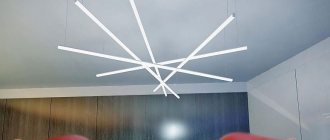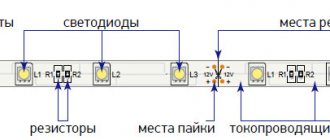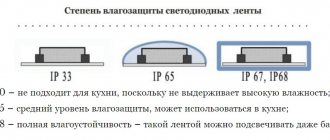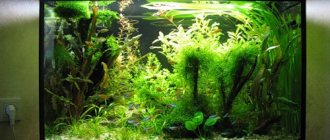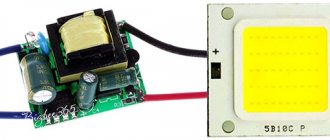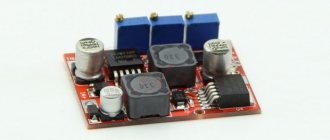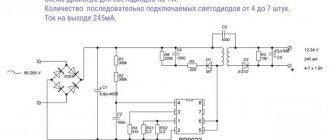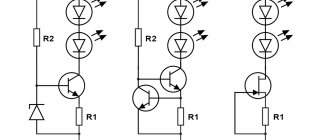3 ways to make a phytolamp for house plants with your own hands. Descriptions of the correct selection of equipment and lamp colors, a short test. 5 tape connection errors and 5 popular questions.
TEST:
To understand whether you have sufficient information about the phytolamp, its purpose and correct assembly, you should take a short test:
- How many primary colors of lamps are included in a lamp?
a) Three colors – green, red and blue.
b) Two – blue and red.
- Why do plants need blue light from a phytolamp and what are the dangers of its excess?
a) Blue light helps to accelerate the growth of plant cells, but if there is oversaturation, the plants will stop growing in length.
b) It has a beneficial effect on fruiting, but too much of it will negatively affect the taste of the fruit.
- How to find out the power consumption of an LED strip?
a) Go to the official website of the manufacturer, find the appropriate section and study the tables with data.
b) All information is applied directly to the tape and you just need to carefully examine it.
c) The tape contains a phone number that you can call and a robotic answering machine will provide all the information you need.
- Is it possible to use LED strip sold with a sticky end for fixing to the surface?
a) It is not advisable, since the sticky layer will not be able to reliably provide fixation, and therefore it is better to use additional fixation yourself using good glue.
b) It is possible. The manufacturer uses a special composition on its products that can provide the best fixation of the tape on any surface. There is no point in taking any additional measures.
Right answers:
- b) the required colors for placement in the lamp are blue and red.
- a) Cell growth will accelerate under the influence of blue light, but do not allow oversaturation, since then the plant will stop growing in length.
- b) All the information of interest can be found on the tape, where the manufacturer types the necessary information for use.
- a) To reliably fix the lamp, you will have to purchase good glue and connect the diodes to the desired surface using it. A standard layer of adhesive will not provide a good hold on the device and the work will have to be redone when the tape comes off.
To create the right lighting for your house plants, you need to assemble a special LED phytolamp.
Definition: phytolamp is a special lighting device that promotes plant growth. Used in the absence of natural light.
There are a huge number of expensive devices for flower lighting on sale. Therefore, it is better to try to assemble a phytolight for lighting plants yourself. You just need to correctly calculate the number of light bulbs and study several technologies for correct assembly.
Components of the structure
To make a budget LED lamp for seedlings you will need:
- LEDs with a power of 1-3 watts, blue (440nm) and red (660nm);
The light wavelength given in brackets shows that the LED is intended specifically for illuminating plants.
- Any aluminum profile;
- Insulated mounting section 0.2 -0.5 sq. mm;
- Thermal paste or hot glue;
- Power cord with plug;
- Power supply.
How to make an LED lamp cheaply - buy LEDs at a popular online auction. Enter “led 1W 660nm” into the search bar.
Self-production of the first phytolamp from tape
The cheapest option for a homemade phytolamp is made from an LED strip. The lamp is made of plastic with a built-in conductive path.
The flexibility of the construction material allows you to create the desired lamp contours. To select the required power of the block, we find out the power consumption of the tape. This value is fixed: 4.8 W per meter, 7.2, 14.4.
These values are printed on each tape. Then you need to multiply the value by meters.
Required:
- LED strip (12 volts). You need to pick up 2 meters of red and 30 cm of blue. The resulting phytolamp will have a square size of 20 by 20 cm.
- PVC has a thickness of 2 mm and a size of 20 by 20 cm. You can purchase the material at a construction store. It is very similar to regular plastic.
- Power connector that will connect to the tape.
- A 12 volt power supply with the required power to power the tapes.
LEDs are available in 2 main types: SMD 5050 and SMD 3028. The numbers indicate the size in millimeters.
For example, you can take a standard length of 2.6 meters - the consumption is 4.8 watts per meter. Using calculation, you can get the power of the unit, which is 12.5 V. The length of the LED strip in meters is multiplied by the power. That is, 2.6 multiplied by 4.8 equals 12.48. In this case, the unit must be selected with a power of at least 13 watts. This number is taken so that there is a small margin.
Before starting assembly, the tape must be cut into pieces equal to 20 cm. As a result, you can get 10 red light tapes and 3 blue ones. We fix them well on the PVC in a certain order: three red, one blue, two red, one blue, two red, one blue, three red.
If you can’t find a PVC sheet, then you can use regular plastic, metal or polycarbonate - whatever you can find in the store.
Tapes are available with and without an adhesive layer. It is undesirable to use the first option, since the LED will not be fixed quite firmly and you will have to redo all the work. That is why for high-quality fixation you need to use hot-melt adhesive, which is used to process the entire tape.
After this, the pieces of tape are soldered together with thin wires. Now we connect the power supply.
This is how you assemble a phytolamp for plants with your own hands. Videos can help you assemble the structure, if necessary - they are easy to find.
Lamp frame design
The location of the LEDs depends on the width of the surface on which the seedlings will stand. If this is a window sill less than 25 cm wide, they can be mounted on one ruler, if larger - on two or even three.
ElevatorForumHouse Member
The ruler is a piece of aluminum profile 100 mm shorter than the window sill.
It is important to position the LEDs evenly, and given that each emits a light cone with an angle of 70-120 degrees, so that the projections of these cones slightly overlap each other, as in this diagram by our user with the nickname Liftanuty.
The profile width is calculated based on the fact that for high-quality heat removal from one one-watt LED, 25 sq. cm of surface area is needed.
A symmetrical U-shaped symmetrical profile is best suited for LED strips. Along its edges you need to make stops with a height of 1 mm.
The rulers must be secured in the frame with screws or blind rivets.
How to avoid 5 mistakes when connecting a tape.
- We must not forget about polarity. The tape is a semiconductor device, and therefore the polarity must be observed correctly. But if there is an error, nothing will happen - it just won’t work and you can try everything again.
- When cutting, you need to find special places on the tape for cutting. You cannot cut anywhere.
- There may be a factory solder on the inside of the tape. If tape is attached to the device, you should be careful when peeling it off, since the soldering can be easily torn off.
- You cannot connect an additional tape to a power supply that was designed only for the first tapes. As a result, the equipment will fail.
- You should not use flux containing acid for soldering. It will remain on the wire and corrode it over time.
Power supply
When choosing drivers, the creator of the lamp strongly recommends that you be careful: if the circuit contains a choke with two windings instead of a transformer, then using such a driver to make homemade lamps is life-threatening.
Drivers ordered from China must be checked for the presence of galvanic isolation with a phase indicator, pressing it one by one to the driver output terminals.
viktor50FORUMHOUSE Member
If the indicator does not light up at any output, it means the driver has a transformer; galvanically isolated from the network. If the indicator lights up, there is no decoupling and it is imperative that the sockets are turned on in the panel room through an RCD (residual current device).
Answers to 5 frequently asked questions.
- Will the tape light up if connected incorrectly? - No, it just won’t turn on.
- What is multibelt tape? – Changing light temperature.
- Which tapes are best to use to create a complex design? – Curly with flexible segments.
- Will the flowers overheat under the light? – No, the tapes do not heat the plants.
- Do I need to add additional white light? - No, it won't be useful.
Assembling a phytolamp or LED lamp for plants with your own hands is not the most difficult task for a gardener.
You can study additional materials on making a phytolamp from an LED strip with your own hands. Video instructions, for example, are easy to find.
Experience of use
FORUMHOUSE member YurecV assembled such a budget lamp from Chinese LEDs and drivers, as well as an aluminum I-beam from a hardware store.
The lamp has two lines, each with 21 LEDs (10 blue and 32 red), the distance between them is 4.5 cm. The LEDs are attached to the I-beam with autosealant.
The lamp cost a thousand rubles (prices in 2016, but even then it was 4-6 times cheaper than buying a ready-made one) and a day of work: half a day to assemble the frame, mark and attach the LEDs, and another half a day to cut and clean , tin and solder the wires. Between these processes we had to wait a day for the sealant to dry completely.
The LEDs on each line are connected in series, each line has its own driver. The entire design consumes 32 watts.
The lamp heats up, but weakly: up to 41 degrees. It can be lowered closer to the plants without the risk of burning them.
In operation, the lamp showed its best performance; even the light-loving dill under it grows fluffy and spreading.
Why do seedlings need lighting?
Most gardeners begin planting seeds for seedlings in February or March. Daylight hours at this time of year are short, and seedlings of different crops require 10–16 hours of light per day for harmonious development. When it is deficient, the seedlings become very elongated, the leaves turn pale and wither; after planting in the ground, the plants either do not take root at all, or take a long time to adapt to the new habitat. And on the contrary, those specimens that have had enough light turn out to be powerful, resistant to the vagaries of the weather, they are characterized by a more developed root system, better resistance to diseases and pest attacks and, as a result of all this, increased productivity.
It is impossible to grow high-quality seedlings without good lighting; seedlings do not have enough sunlight at the end of winter and at the beginning of spring
Main options and their features
For home use, you should choose one of two options, as they have proven to work best and can be purchased in most stores. Features of each type:
- Fluorescent light sources. A time-tested type that was the only one a couple of decades ago. They can be either tubular or for a standard E27 cartridge. The light power is not very high, but the lamps do not heat up during operation and provide optimal performance. Service life is no more than a year due to phosphor burnout and spectrum distortion.
- LED options allow you to select the optimal radiation and its power, which will simplify the manufacture of a homemade phytolamp. At the same time, diodes consume the least amount of electricity and have a long service life, during which the spectrum is practically not distorted. The products are easy to install, they do not heat up much during operation and do not pose a danger to humans, since they operate on low-voltage power.
Ultraviolet lamp option.
Checking LEDs with a tester
Checking the LED with a multimeter
You can determine the performance of LEDs for phytolamps using a tester. The verification algorithm is as follows:
- Setting the tester to the “breakage test” position.
- Touch the terminals with the probe. Red is placed on the anode, black - on the cathode.
- When checking, the diodes should light up. Defective ones will not light up.
- When changing the polarity, the screen should remain one.
Also, testing on a multitester can be carried out through the transistor sockets. The holes on the left of the anode are placed in sockets E, the cathodes - in C. For the holes on the right - vice versa.
Buy or make it yourself?
What did you end up with in terms of expenses? 1400 rubles included LEDs, driver and delivery by Russian Post. Aluminum threshold 0.9 - 160 rubles, superglue - 20 rubles, thermal paste - I had my own, 1.5 meter cord with a plug - 70 rubles. Total – 1650 rubles.
As you can see, much cheaper than store-bought phytolamps.
And one more little tip. If you want to automate the process of additional illumination of seedlings, then I recommend spending money and purchasing an electronic programmable timer.
This will allow you to control the duration of the phytolight and set the intervals between its activations. For example, my lamp works from 5 am to 12 pm and from 4 pm to 9 pm, and the “LED sun” rests for 4 hours during the day.
Next year I plan to make a special box for growing seedlings and cover the inside with foil material to catch all the light, so priceless and very necessary for our favorite plants.
In any case, no matter what option you use - using conventional fluorescent lamps or using phytolamps - this is much better than not using additional illumination of seedlings at all.
PS Now I have replaced the phytolamp from this lesson with a regular homemade one, with a white spectrum of light. It also uses 13 LEDs, a driver and a 20x20 aluminum profile that is slightly shorter than the width of the window.
That's all. Thanks everyone for your attention. If you have any questions, ask.
Sincerely, Anton Lapshin.
If you liked the lesson or article, please support me by clicking on the social buttons below. Thus, you will share information about the GimpArt.Org blog with your friends on social networks. Thank you!
Author of the GimpArt.Org blog - Anton Lapshin
Over the course of 10 years, I taught more than 12,000 users how to use the Gimp photo editor; my video lessons and master classes on the YouTube channel of the same name were watched more than 1,400,000 times!!!
Calculation of the required light
To operate phytolamps, LEDs are used, and usually only red and blue; That’s what they’re called – phyto-LEDs. The red glow of LED lamps is used for plants and seedlings that are about to bloom. Blue improves cell growth; Suitable for young plants and seedlings that have not yet grown. The wavelength of the red LED is 660 nm (nanometers), blue - 445 nm. Look at these two characteristics when choosing LEDs.
For seedlings and house plants that are already oversaturated with blue spectrum radiation, we recommend adding LEDs with a violet spectrum.
However, before you start assembling the phytolamp with your own hands, you need to calculate how many diodes we will need. There can be three versions of the phytolamp, in the ratio of red and blue lamps:
- For active growth of seedlings and plants. There are four red diodes to one or two blue ones; or remove the red ones altogether and leave only the blue ones.
- For mature plants. Fruitfulness. We choose a ratio of six red to one blue, or only red.
- General lighting of several plants. One blue and four to six red.
Using this formula, the number of lamps needed is calculated, where
P – power of all lamps, Watt.
L – length of the lighting area, M.
H – width, M.
B – illumination value, not less than 8000 Lux.
The lighting area is the size of the window sill or shelf of the rack for seedlings and plants. The amount of illumination is measured in lux. One lux is a value that means that a light source (lamp) uniformly illuminates an area of 1 m2. You can see the number of lumens in the lamp characteristics written on the packaging, in the instructions, or on the diode itself.
After such calculations, you can proceed to the next stage of assembling LED lamps for your plants.
Full Spectrum LED Plant Growth Strip
Sometimes RGB sources are called this, which is not correct, since installing full-spectrum LEDs on a strip is technologically impossible.
The USKI source is a blue spectrum LED coated with a special luminescent layer. This design allows luminous flux to be emitted in the range of 400-800 nM, with the peak intensity occurring at 630-640 nM (spectrogram shown in Figure 3).
Figure 3. Spectrogram of USKI LED
Some unscrupulous manufacturers indicate a peak intensity of 660 nM in their products; this, to put it mildly, does not correspond to reality, since the technology used does not allow obtaining a source with such a characteristic. This limitation can be circumvented when making matrices; for this purpose, I install several crystals of the red spectrum in them.
LED and LED matrix manufactured using USKI technology (proportions not respected)
The cost of this type of LED source is not much less than phyto tape, which makes it not an entirely acceptable alternative.
